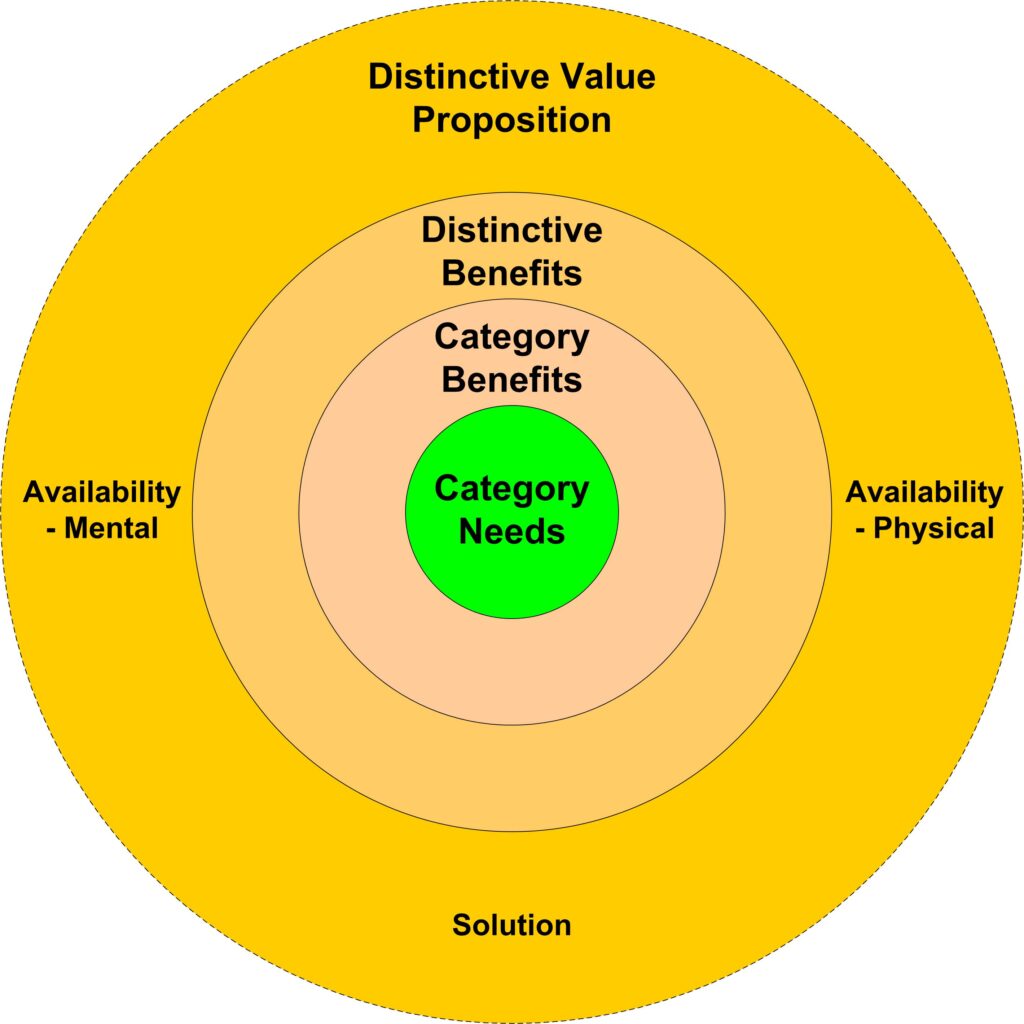Introduction
A Distinctive Value Proposition (DVP) is the bundle of benefits, based on the solution, that the Customer Segment will receive.
The diagram below is a simplified model of what a DVP is made of.

Model of the Distinctive Value Proposition.
At the core of the DVP model are the Category Needs, that is, the needs of the customers within the category. To satisfy the category needs, in the first ring, a business provides Category Benefits. In the second ring, businesses have the option of also providing additional value, that customers care about, by providing Distinctive Benefits. Finally, the outer ring represents, from the business’s perspective, everything that goes into making a distinctive proposition of value for customers, and from the customers’ perspective, the outer ring represents the value expected from the fulfilment of a promise.
Components of a Distinctive Value Proposition
The term and concept Distinctive Value Proposition has two interrelated components:
- The proposition is distinctive by being available as a result of the marketing strategy, where availability refers to both:
- Mental availability – the number of associations a buyer has about the branded DVP, the strength of those associations, and the relevance of the associations to the buying context.
- Physical availability – making the branded DVP as easy to find and buy as possible.
How Brands Grow: What Marketers Don’t Know, Byron Sharp.
- The distinction in the customers’ perception that the branded DVP will reliably deliver the generic category benefits.
Discussion
A DVP is critical in these days of hyper-competition. A Unique Value Proposition (UVP) is similar to but a subset of a DVP. With a UVP, you attempt to make your solution as unique (differentiated from the competition) as possible. However, meaningful uniqueness is hard to achieve, and if ever achieved, may not last for long.
Instead of focusing on the probably futile quest of trying to achieve and then maintain uniqueness, the principles behind a DVP are aimed at ensuring that a branded solution, is distinctive. To be distinctive, a DVP must be easy to remember, find, buy, and provide at least all the benefits customers expect (value) from a solution in your category (the category benefits).
Adding extra features to a DVP for the sake of being different but missing some category benefits or delivering the category benefits poorly will not make customers or users happy. The book Business Model Generation, by Alexander Osterwalder and Yves Pigneur, did not use the word distinctive to qualify their term and concept Value Proposition. However, it is implied, as “The Value Proposition is the reason why customers turn to one company over another.”
